Regarding family camping trips, there’s nothing like gathering around a campfire under the starry night sky. Campfires create a cozy and memorable ambiance, perfect for sharing stories, songs, and roasting marshmallows. However, it’s essential to prioritize safety, especially when young children are involved.
As an expert in camping and outdoor activities, I want to share some essential rules and tips for keeping kids safe around campfires. First and foremost, establish clear boundaries around the campfire area.
Ensure children understand they must stay a safe distance away and never enter the designated fire zone. Instruct them to respect these boundaries and never throw anything into the fire without permission and supervision. It’s also crucial to teach children about the dangers of playing with fire and the importance of listening to adults’ instructions regarding the fire.
Always maintain a watchful eye on children when they are near a campfire. Assign an adult as the Campfire Safety Officer, responsible for supervising kids and ensuring they adhere to the rules. Teach children to stop, drop, and roll if their clothing catches fire, and practice this safety technique beforehand to engrain it in their minds. Keep a fire extinguisher and a bucket of water nearby as preventive measures.
Following these rules and tips ensures the whole family has a safe and enjoyable camping experience. Keeping kids safe around campfires is a shared responsibility, and with proper precautions and supervision, you can create lasting memories while prioritizing their well-being. Read on to discover more valuable insights on family camping and outdoor activities.
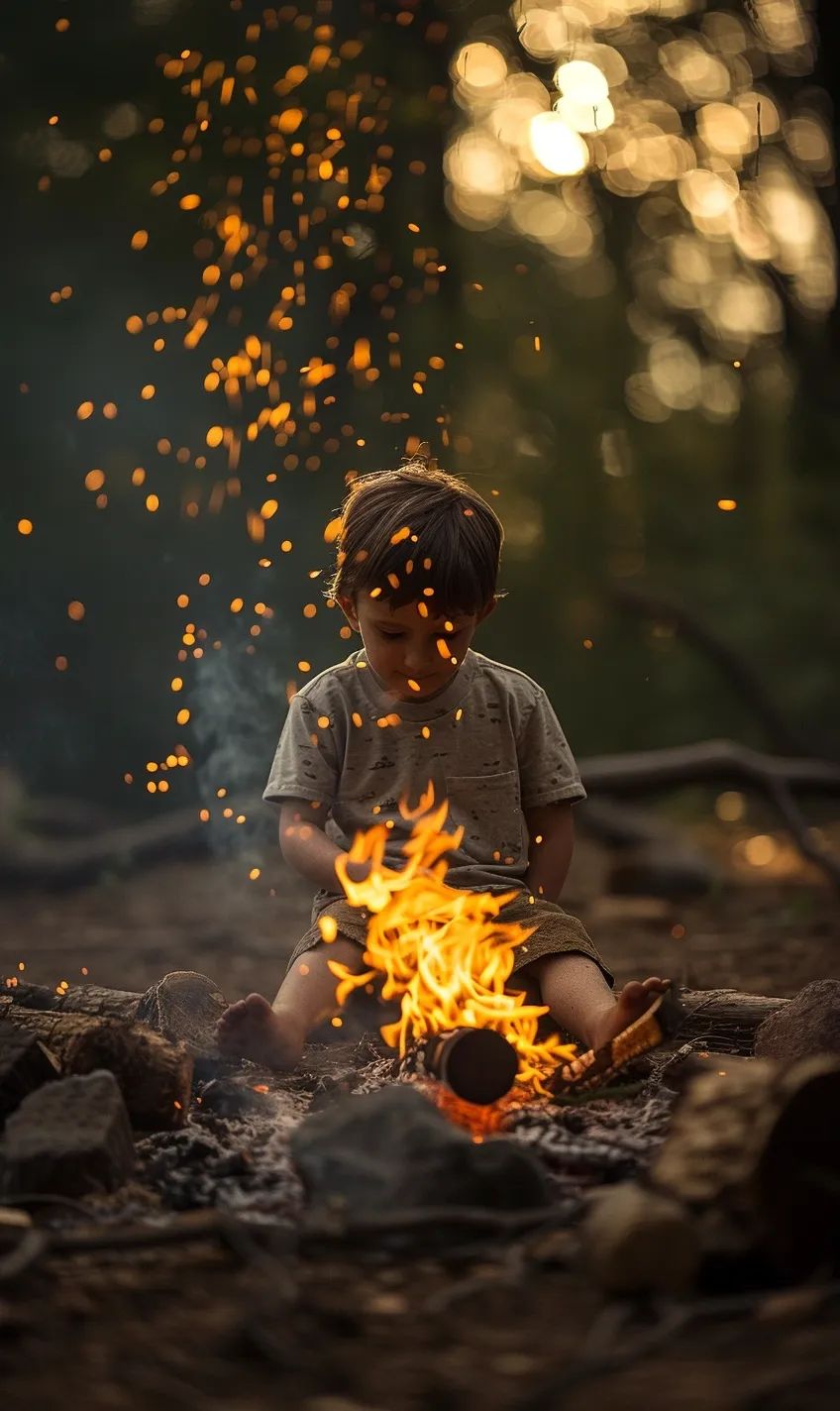
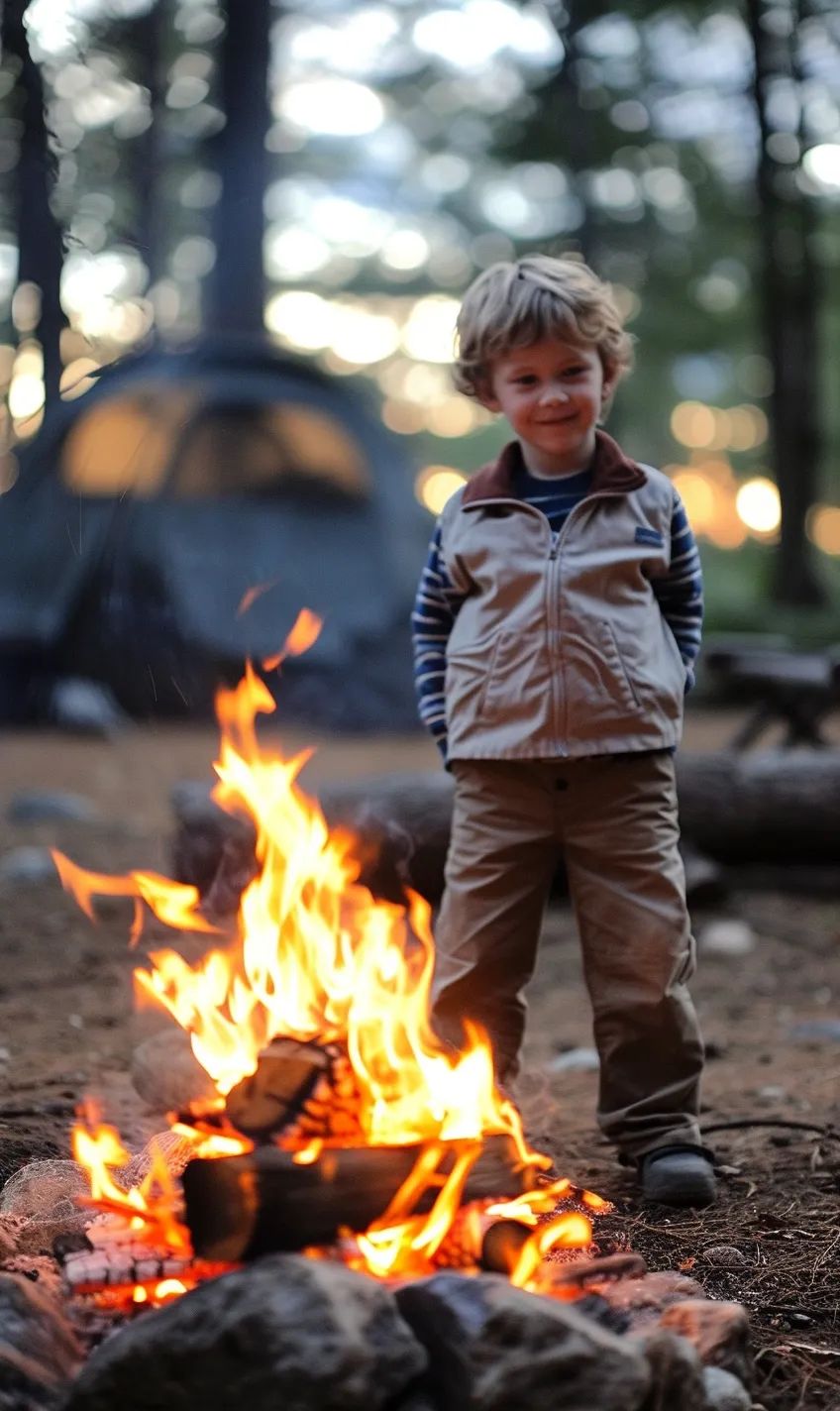
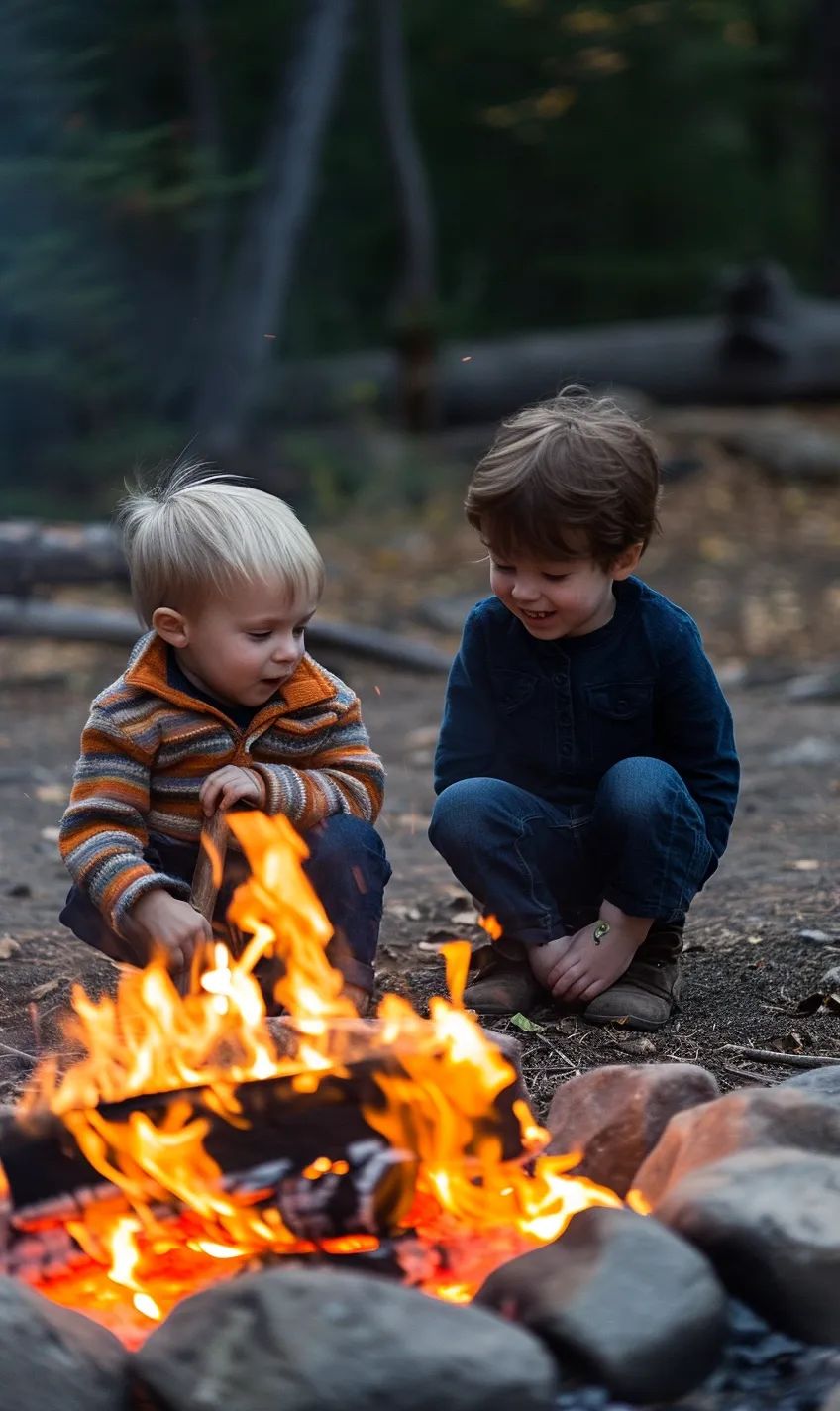
The Importance of Campfire Safety for Families
Regarding family camping, there’s no doubt that gathering around the campfire is one of the most cherished experiences. The crackling flames, the warmth it provides, and the opportunity to bond over stories and roasted marshmallows—it’s all part of the magic of camping. However, it’s essential to prioritize campfire safety, especially when kids are involved. Here’s why keeping kids safe around campfires should be your top priority.
The Dangers of Unsupervised Campfire Activities
No matter how small, a campfire can pose various risks, especially to young children who may not fully understand its dangers. Some of the potential hazards associated with unsupervised campfire activities include:
- Accidental burns and injuries
- Spreading wildfires and forest fires
- Inhaling smoke and harmful fumes
- Tripping and falling into the fire
By ensuring campfire safety, you can significantly reduce the chances of these incidents occurring and create a worry-free environment for your family.
The Importance of Establishing Clear Rules
Before starting a campfire, it’s crucial to establish clear rules and guidelines for your kids. Communicating these rules effectively ensures everyone understands the risks and knows how to stay safe. Some important rules to consider include:
- No playing or running near the campfire
- No throwing objects into the fire
- No leaving the campfire unattended
- No poking or prodding the fire with sticks
Setting these rules emphasizes the importance of campfire safety and teaches your kids responsible behavior around fires.
The Role of Supervision and Age-Appropriate Responsibilities
Supervision is crucial when it comes to kids and campfires. Assigning age-appropriate responsibilities and ensuring adult supervision will go a long way in keeping your children safe. Here are some tips to consider:
- Younger children should be kept at a safe distance from the fire
- Older kids can assist with firewood collection under supervision
- No child should be left alone near the campfire
Kids learn by example, so demonstrate safe campfire practices and behavior. By prioritizing campfire safety, establishing clear rules, providing appropriate supervision, and teaching responsibility to your kids, you can create a safe and enjoyable camping experience for the whole family. Stay tuned for our next post, where we’ll dive into choosing the right campfire location for maximum safety.
Establishing Clear Rules for Kids Around Campfires
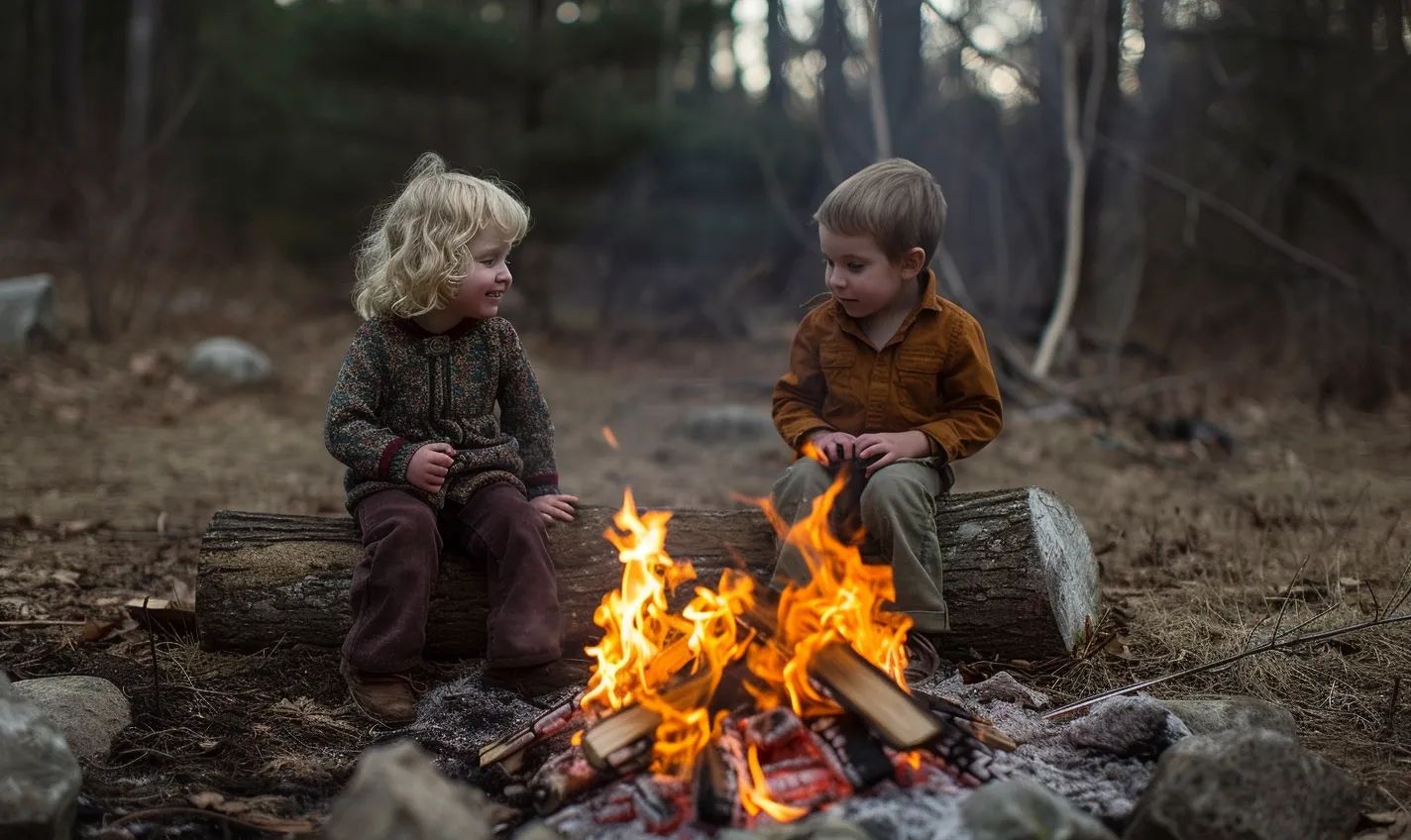
Campfires are integral to the camping experience, providing warmth, light, and a cozy gathering spot for family and friends. However, it is crucial to prioritize safety, especially when children are involved. Establishing clear rules for kids around campfires can ensure a fun and safe camping trip for everyone.
Setting Boundaries
Children need to understand the boundaries and limitations when it comes to campfires. Setting clear rules will help them stay safe and prevent accidents. Here are some essential guidelines to establish:
- Ensure children understand that only adults can start or tend to the campfire.
- Prohibit running or rough play around the campfire area.
- Teach kids to stay safe from the flames, usually at least three feet.
- Explain the dangers of playing with sticks or poking the fire without adult supervision.
- Emphasize that campfires are for enjoyment, not cooking food or burning other materials.
Supervision is Key
Supervising children near the campfire is crucial to their safety. Even if they understand the rules, accidents can happen. Here are some tips for adequate supervision:
- Designate a responsible adult to be in charge of campfire safety.
- Ensure the adult is within arm’s reach of young children when they are near the fire.
- Monitor and reinforce the established rules consistently.
- Encourage children to ask an adult for assistance if they need anything near the fire.
Remember, children learn by example. By modeling safe behavior around the campfire, you can instill responsible habits in them.
Teaching Emergency Procedures
While prevention is critical, it is crucial to prepare children for emergencies. They should know what to do in an accident or fire mishap. Here’s how to educate them:
- Show children the location of the nearest water source or fire extinguisher.
- Teach them how to extinguish a fire using water or sand properly.
- Explain the importance of staying calm and calling for help from a responsible adult or emergency services.
- Discuss a designated meeting point outside the campsite in case of evacuation.
You can keep kids safe around campfires by establishing clear rules, providing proper supervision, and teaching emergency procedures. The camping experience will be more enjoyable and worry-free for the entire family.
Age-Appropriate Responsibilities and Supervision
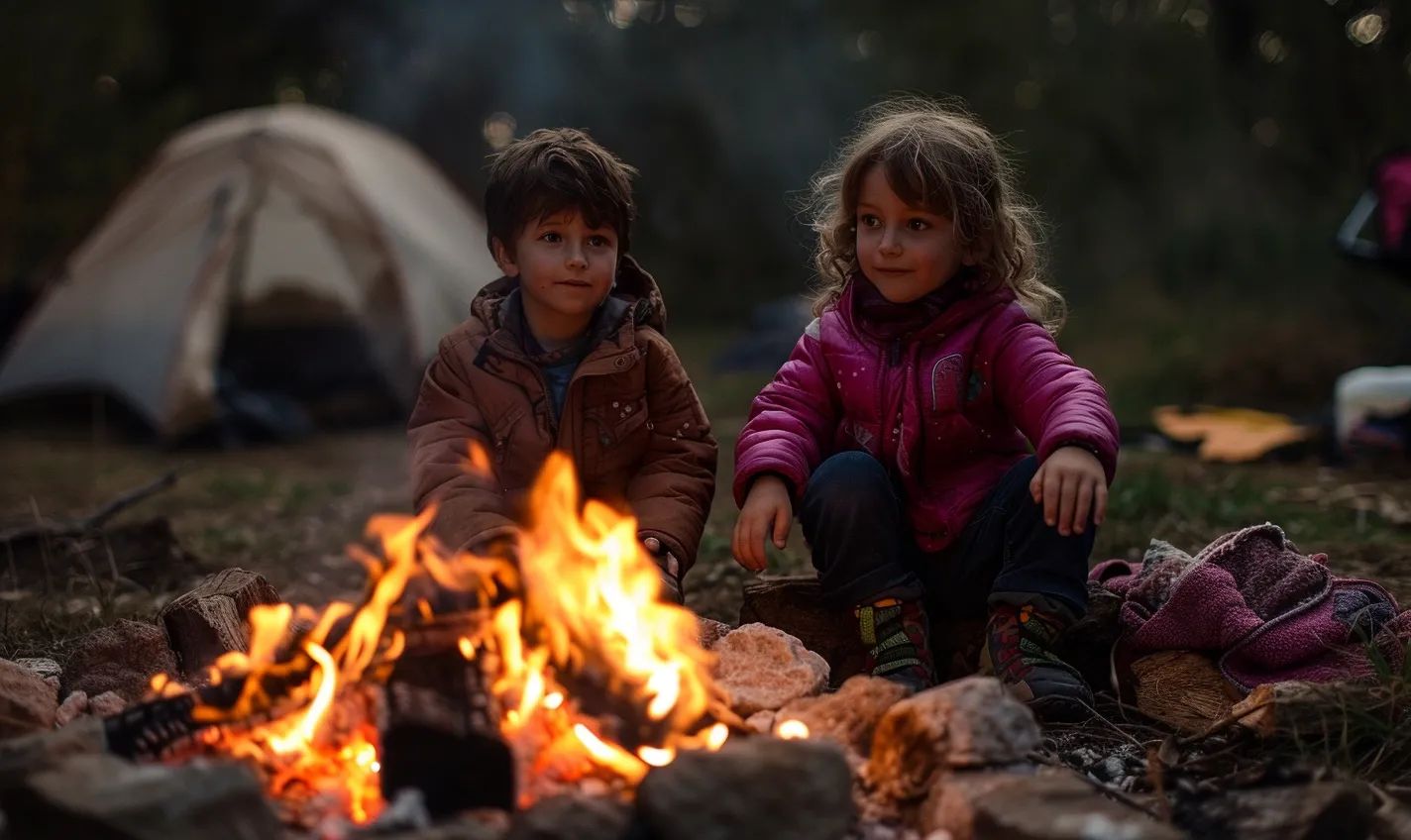
Regarding keeping kids safe around campfires, age-appropriate responsibilities and supervision play a crucial role. As parents, we are responsible for ensuring that our children understand the rules and are adequately supervised to prevent accidents or injuries. Here are some tips to help you establish age-appropriate responsibilities and supervision while enjoying a campfire with your family:
Set Clear Boundaries
Start by setting clear boundaries and explaining the rules to your children. Talk with them about the importance of staying safe from the campfire and never leaving it unattended. Please encourage them to ask questions and ensure they understand the potential dangers of fire.
Assign Age-Appropriate Tasks
Depending on their age and abilities, assign your children age-appropriate tasks related to the campfire. For example, older kids can help gather firewood or assist in setting up the seating area around the fire. At the same time, younger children can be responsible for bringing water in case of emergencies. Assigning tasks keeps kids engaged and instills a sense of responsibility and ownership. However, always ensure that these tasks are within their capabilities and that they are supervised while performing them.
Follow Supervision Guidelines
Supervision is crucial, especially when children are near a campfire. Younger children should always be accompanied by an adult when around the campfire. For older kids, you can gradually increase their independence but continue to monitor their behavior and remind them of the safety rules. Supervision also means being alert and attentive. Avoid distractions like using electronic devices or engaging in lengthy conversations that take your focus away from the campfire and your children.
Teach Fire Safety Skills
Take the time to teach your children essential fire safety skills. Show them how to safely ignite the fire, handle matches or lighters, and use fire extinguishing equipment if necessary. Reinforce the importance of never playing with fire and how to respond in an emergency. Remember, teaching fire safety is an ongoing process, and it is essential to reinforce these skills with your children regularly. Establishing age-appropriate responsibilities and providing proper supervision can create a safe environment for your kids around the campfire. Always remember that safety should be the top priority when enjoying camping experiences with your family.
Choosing the Right Campfire Location
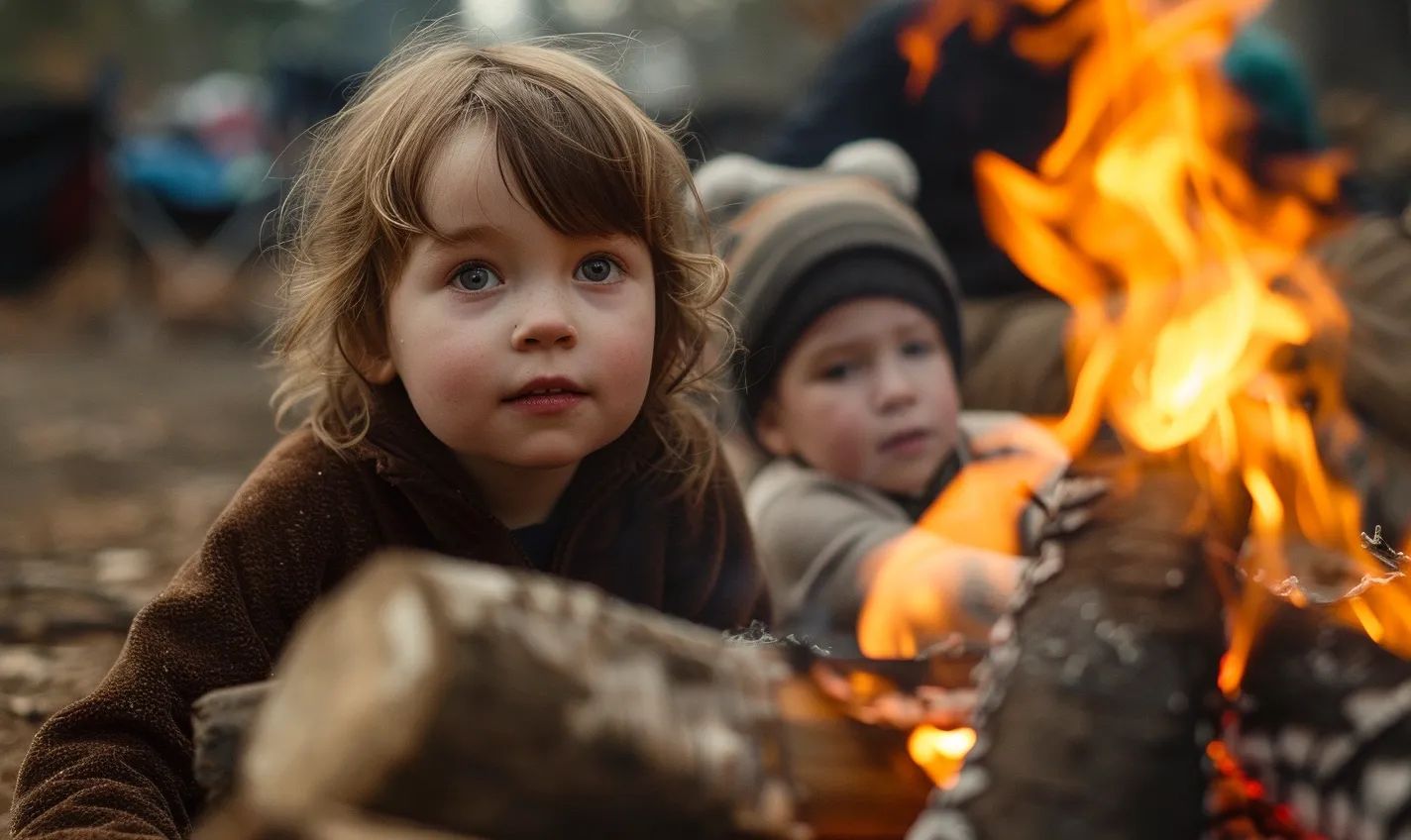
Regarding family camping trips, one of the most exciting activities is gathering around a cozy campfire. However, it’s crucial to choose the right campfire location to ensure the safety of everyone, especially kids. Here are some essential tips to consider when selecting the perfect spot for your campfire:
Find a Clear and Open Area
Look for a spot free from overhanging branches, dry grass, or other flammable materials. Clear a designated area from debris and create a safe perimeter around the fire.
Check Local Regulations
Before starting a campfire, always check with the campground or local authorities for specific fire rules or regulations. Some areas may have restrictions, especially during dry seasons or in high fire-risk zones.
Consider Wind Direction
Pay attention to the wind direction when choosing where to build your campfire. Ensure no strong gusts could carry embers or sparks toward tents, trees, or other flammable objects.
Opt for a Fire Ring or Pit
If the campground provides designated fire rings or pits, it’s best to use them. These structures are designed to contain the fire, minimizing the risk of spreading and ensuring a safer campfire experience.
Keep a Safe Distance
Ensure that your campfire is safe from tents and other camping equipment. Maintaining at least a 10-foot radius of clear space around the fire is a good rule of thumb. Remember, keeping kids safe around campfires starts with choosing a suitable location. Following these guidelines can create a safe and enjoyable campfire experience for the whole family. Now that you’ve found the perfect spot, the next step is to gather the essential safety equipment and tools. Stay tuned for our next blog post to learn about the must-have items for every family camping trip!
Essential Safety Equipment and Tools
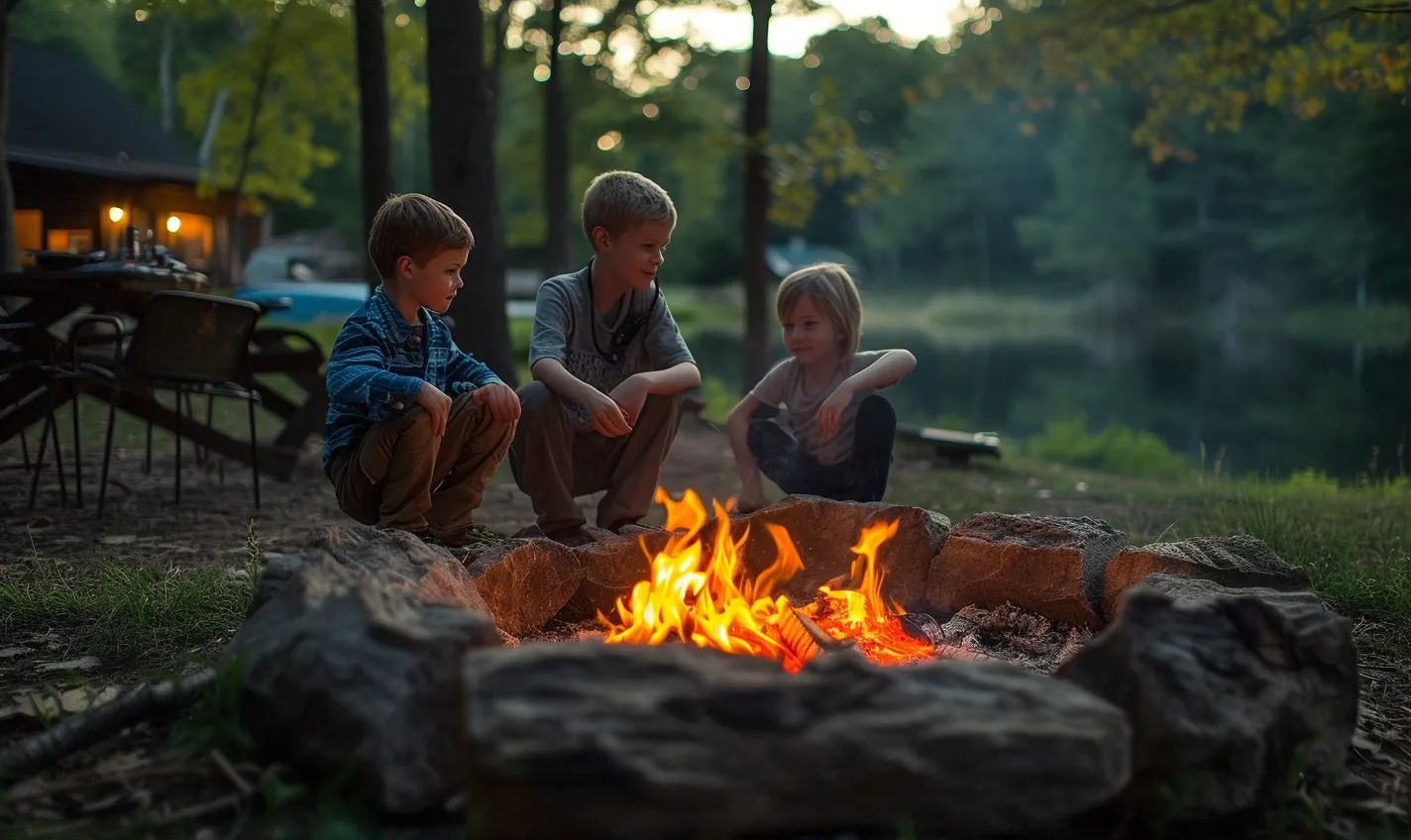
Stay Prepared with These Must-Have Camping Safety Items
Proper safety equipment and tools are vital when keeping your kids safe around campfires. These items help prevent accidents and ensure that you can handle emergencies effectively. Here are some must-have safety equipment and tools for every family camping trip: 1. Fire Extinguisher: Invest in a portable, easy-to-use fire extinguisher designed for outdoor use. Make sure it is kept in an easily accessible location near the campfire. 2. First Aid Kit: Always have a well-stocked kit with you. It should include bandages, antiseptic wipes, pain relievers, tweezers, and prescription medications. 3. Water Buckets: Have several buckets filled with water near the campfire site. These can be used for extinguishing the fire and dousing any sparks or embers that may fly away. 4. Shovel: Keep a sturdy shovel nearby to help control the campfire and move around hot coals when necessary. 5. Fireproof Gloves: Fireproof gloves are essential for handling hot tools or materials near the campfire and can protect your hands from burns.
Additional Tips for Campfire Safety
In addition to having the proper safety equipment and tools, there are several other essential tips to keep in mind when establishing a safe campfire:
- Start the campfire in a designated fire pit or ring safe from tents, trees, and other flammable objects.
- Clear the area around the campfire of any debris, dry leaves, or grass that can easily catch fire.
- Never leave the campfire unattended, especially when kids are present.
- Teach children to respect the campfire and establish boundaries around it.
- Supervise children closely when they are near the campfire and teach them how to interact with it safely.
- Extinguish the campfire entirely before leaving or going to sleep.
Remember, practicing campfire safety is not just essential for keeping kids safe; it also ensures the well-being of everyone in the campground. By being prepared, following the rules, and having the proper safety equipment and tools, you can create lasting memories around the campfire while keeping your family safe.
Teaching Proper Fire Building Techniques
When it comes to camping, a warm and cozy campfire is often the centerpiece of the experience. However, it is crucial to teach your children the proper fire-building techniques to ensure their safety and the safety of others. Here are some tips to help guide you in teaching this essential skill:
Start with the Basics
Begin by explaining the fundamental principles of fire building, such as the importance of using dry wood and creating a proper fire lay. Show them how to arrange the kindling and wood in a pyramid or teepee formation, leaving enough space for airflow.
Emphasize Safety Measures
As you introduce fire-building techniques, emphasize the importance of safety. Teach your children about the rules and precautions you discussed earlier, such as a safe distance from the fire and never leaving it unattended. Reiterate the significance of being cautious around flames and hot ashes.
Demonstrate Proper Use of Fire Starters
Show your children how to use fire starters like matches or lighters safely. Teach them to handle these tools responsibly and how to light them without endangering themselves or others. It’s essential to highlight the potential hazards of using fire starters and emphasize the need for adult supervision.
Foster Responsibility
Please encourage your children to take responsibility for their role in fire building. Assign age-appropriate tasks, such as gathering small sticks or helping with firewood preparation. Involving them instills a sense of ownership and teaches them the importance of teamwork and cooperation.
Practice Fire Safety Drills
Like in emergencies, practicing fire safety drills helps build muscle memory and reinforces proper procedures. Conduct regular drills with your children, simulating various scenarios and teaching them how to respond safely and efficiently. This practice will reinforce their understanding of fire safety and reduce panic if an actual emergency occurs. Teaching your children proper fire-building techniques ensures they develop a skill that can keep them safe throughout their lives. Remember, the key is supervising them closely during the learning process, gradually allowing more independence as they demonstrate their understanding and responsibility. Stay tuned for the next article in this series, discussing the importance of supervising kids near the campfire.
Supervising Kids while Near the Campfire
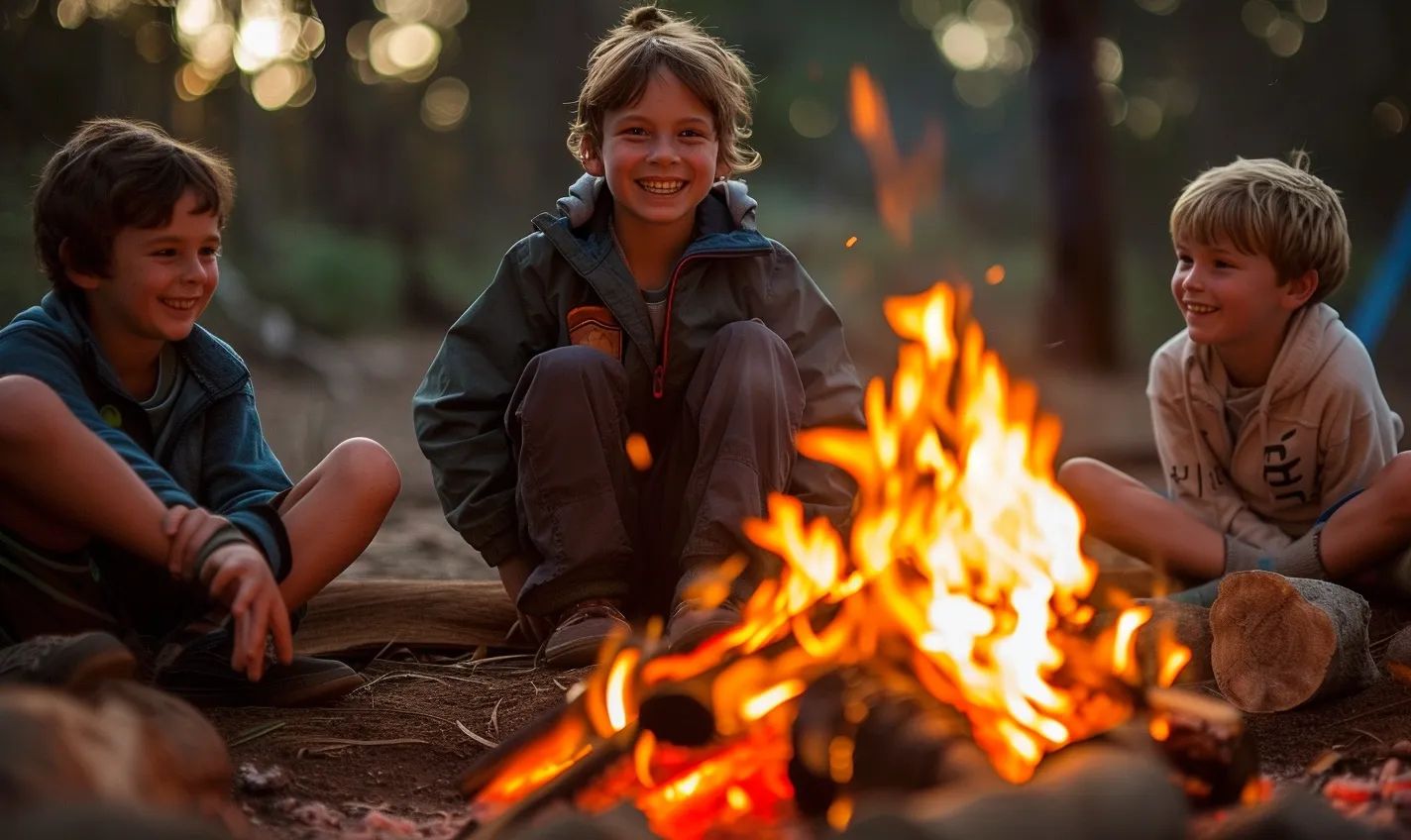
Building a campfire can be an exciting and memorable experience if you’re planning a family camping trip. However, it’s crucial to prioritize the safety of your children when they’re near the campfire. With a few simple rules and tips, you can ensure that everyone stays safe and enjoys the magic of a campfire.
Always Be Present
The key to supervising kids around the campfire is always to be present. Never leave children unattended near the fire, even for a moment. Stay within arm’s reach to handle any potential accidents or emergencies.
Teach Campfire Rules
Before starting the campfire, establish clear rules with your children. Some fundamental rules to emphasize include:
- Children must keep a safe distance from the fire, usually at least three feet.
- Running or playing near the fire is strictly prohibited.
- Only adults can tend to the fire, add wood, and adjust flames.
- Keep flammable objects away from the fire, such as tents, chairs, and backpacks.
- Show children how to stop, drop, and roll if their clothing catches fire.
Use Protective Barriers
Creating physical barriers around the campfire is essential to prevent accidental contact—place chairs or logs around the fire to create a designated area where children cannot cross. Use a sturdy fire ring or enclosure to minimize the risk of uncontrollable flames.
Consider Campfire Alternatives
If you’re concerned about children’s safety near the campfire, consider opting for alternative activities. Storytelling, stargazing, or playing games can be just as enjoyable for children without the potential hazards of an open flame.
Stay Calm and Encourage Smart Behavior
Children often learn from the behaviors they observe. You can instill these habits in your kids by staying calm and demonstrating innovative fire safety practices. For example:
- Teach children to respect the campfire and ask for permission before approaching it.
- Show them how to safely roast marshmallows or cook food using long, heat-resistant utensils.
- Explain the importance of not throwing any objects into the fire, especially plastic or metal items.
Remember, monitoring your children’s behavior and correcting unsafe actions is crucial. By reinforcing these safety measures, you can create a safe and enjoyable campfire experience for the whole family.
Extinguishing the Campfire Safely
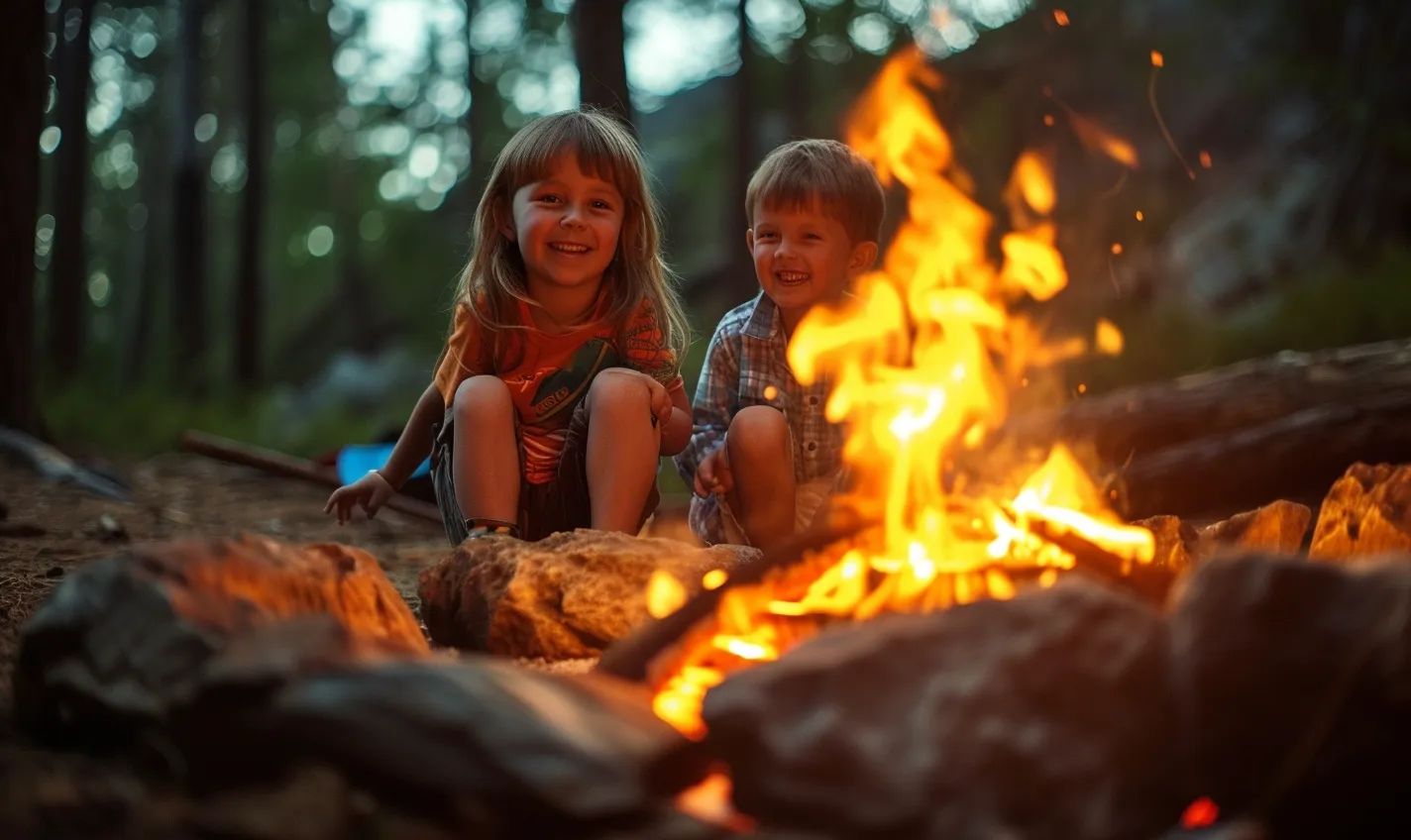
As the day draws to a close and the stars start twinkling in the sky, it’s time to extinguish the campfire safely. This is crucial to ensure your family’s safety and the environment around you. Here are some important rules and tips to follow when extinguishing a campfire:
Allow the Fire to Burn Down
Before you start the extinguishing process, allow the fire to burn down completely. This step ensures a minor fire, making it easier to control and put out.
Remove Flammable Materials
Before extinguishing the fire, carefully remove debris or flammable materials from the immediate vicinity. This will prevent sparks or embers from reigniting the fire once you’re done.
Separate the Firewood
Using a stick or a shovel, separate the burning logs and firewood within the fire pit. This allows for better access to each piece and ensures they cool down quickly.
Spread the Ashes
Gently spread the ashes out over the remaining fire pit area. This helps dissipate the heat in the ashes and prevents them from reigniting later.
Pour Water on the Fire
Carefully pour water over the fire pit using a bucket or water container. Ensure all embers, ashes, and burning materials are fully saturated. Stir the mixture with a stick to help speed up the cooling process.
Repeat the Process
After pouring water, wait a few minutes and check if any steam or smoke rises from the fire pit. If there’s any remaining heat or live embers, repeat the process until the fire pit is cool to the touch.
Feel for Coolness
To ensure the fire is entirely extinguished, carefully touch the fire pit area. If it feels cool, you can be confident the fire has been extinguished. Remember, never leave a campfire unattended; follow campground regulations and guidelines. Ensuring the campfire is extinguished correctly is essential for keeping your family safe, protecting the environment, and minimizing the risk of wildfires.
Communicating Emergency Procedures with Kids
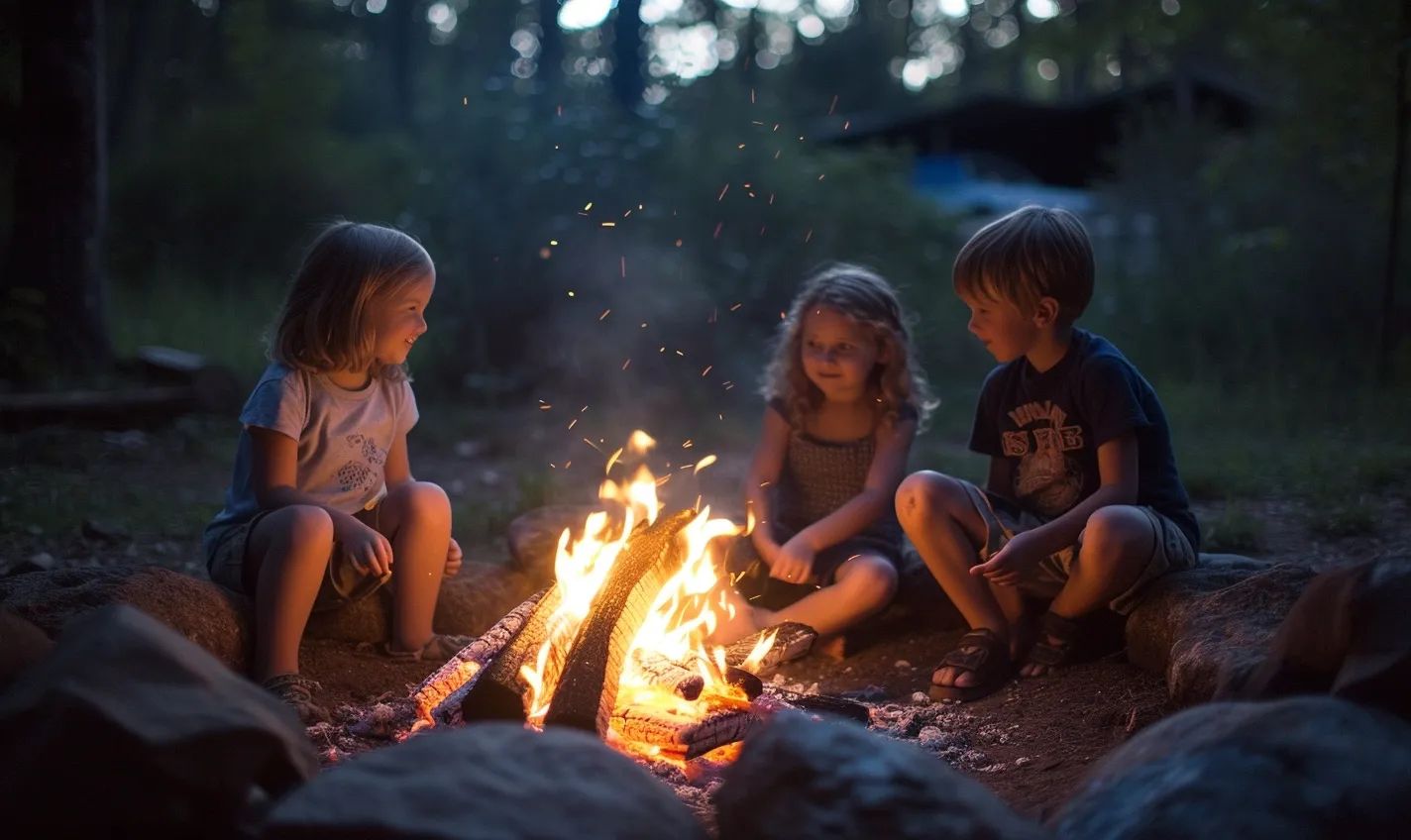
Why is it important to teach kids about emergency procedures?
Safety should always be a priority for camping, especially when children are involved. That’s why it is essential to communicate emergency procedures with kids before embarking on any camping trip. By educating them about potential dangers and teaching them what to do in case of an emergency, you can give them the knowledge and confidence to navigate challenging situations.
How do you effectively communicate emergency procedures with kids?
Here are some tips to help you effectively communicate emergency procedures with your children:
- Start with a conversation: Sit down with your kids and discuss safety and emergencies openly. Use simple language and provide examples that they can relate to.
- Explain the dangers: Discuss potential hazards such as getting lost, encountering wildlife, or injuries around the campfire. Emphasize the importance of staying calm and following instructions.
- Create a plan: Develop a family emergency plan and involve your kids. Teach them essential details such as the location of emergency supplies, how to contact help, and where to go if they get separated from the group.
- Practice emergency drills: Regularly conduct emergency drills to reinforce the procedures. Make it a fun and interactive activity so your kids learn while having fun.
- Use visual aids: Visual aids, like charts or pictures, can help explain emergency procedures. Hang them in the camping area or keep them in a visible spot in case a refresher is needed.
Key points to cover when discussing emergency procedures:
- How and when to call for help
- What to do if someone gets injured
- How to use basic first aid supplies
- The importance of staying together as a group
- Identifying safe spots or landmarks in the camping area
Remember, repetition is critical. Continuously reinforce the emergency procedures with your children, especially before every camping trip. By effectively communicating these protocols, you can strengthen your family’s safety while enjoying the great outdoors.
Practice Makes Perfect – Fire Safety Drills for Families
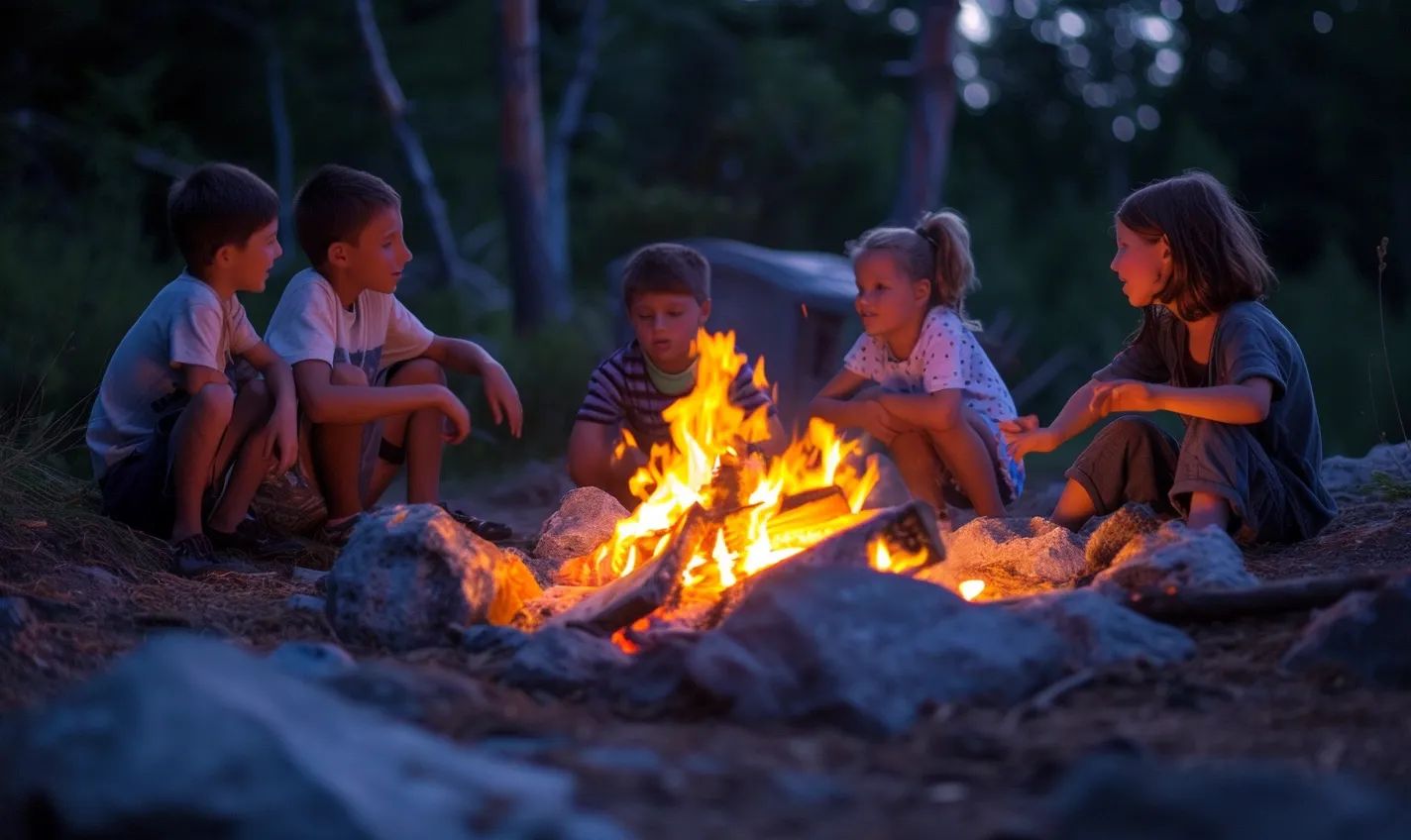
When it comes to keeping kids safe around campfires, practice makes perfect. By conducting regular fire safety drills, you can ensure that your family is well-prepared and knows precisely what to do in an emergency. Here are some tips on incorporating fire safety drills into your camping routine.
Start with the basics.
Begin by teaching your kids the essential fire safety rules. Ensure they know to keep a safe distance from the fire, never play with matches or lighters, and always ask for an adult’s assistance when starting or tending to the campfire.
Demonstrate proper fire extinguishing techniques.
Show your children how to extinguish a campfire safely. Explain the steps, such as pouring water over the flames, stirring the ashes, and repeating the process until everything is cool to the touch. Please encourage them to practice these techniques under your supervision.
Practice emergency evacuation drills.
In a fire-related emergency, your family must know how to evacuate the campsite quickly and safely. Designate a meeting point away from the fire and establish a clear signal for when to leave the area. Practice this drill regularly so that everyone is familiar with the procedure.
Educate on the importance of communication.
Teach your kids the importance of communication during a fire incident. Ensure they understand how to dial emergency services and what information to provide. Encourage them to memorize significant numbers or store them in their mobile phones if they are old enough.
Encourage responsible behavior
While practicing fire safety drills, reinforce the importance of responsible behavior around campfires. Please remind your children that fires are not toys, and their actions can have serious consequences. Emphasize the need always to follow the established rules and exercise caution. By practicing fire safety drills as a family, you are equipping your children with essential fire safety knowledge and instilling in them the importance of being responsible and cautious around campfires. You can create a safe and enjoyable camping experience for the whole family.
Conclusion
Regarding camping with kids, safety should always be the priority. This includes teaching them about campfires and establishing rules to ensure they stay safe. By following these simple guidelines, you can enjoy the warmth and fun of a campfire while keeping your children protected.
Remember to select a suitable location for the campfire, keep a safe distance from tents and other flammable objects, and never leave the fire unattended. Teach your kids about fire safety, such as staying away from the fire’s edge and using appropriate tools for roasting marshmallows or hot dogs.
Additionally, always keep a bucket of water and a shovel nearby for emergencies. By setting clear rules and supervising your children, you can create lasting memories around the campfire while ensuring their safety.
Proper preparation and education will make your family camping trip enjoyable and secure for everyone involved.
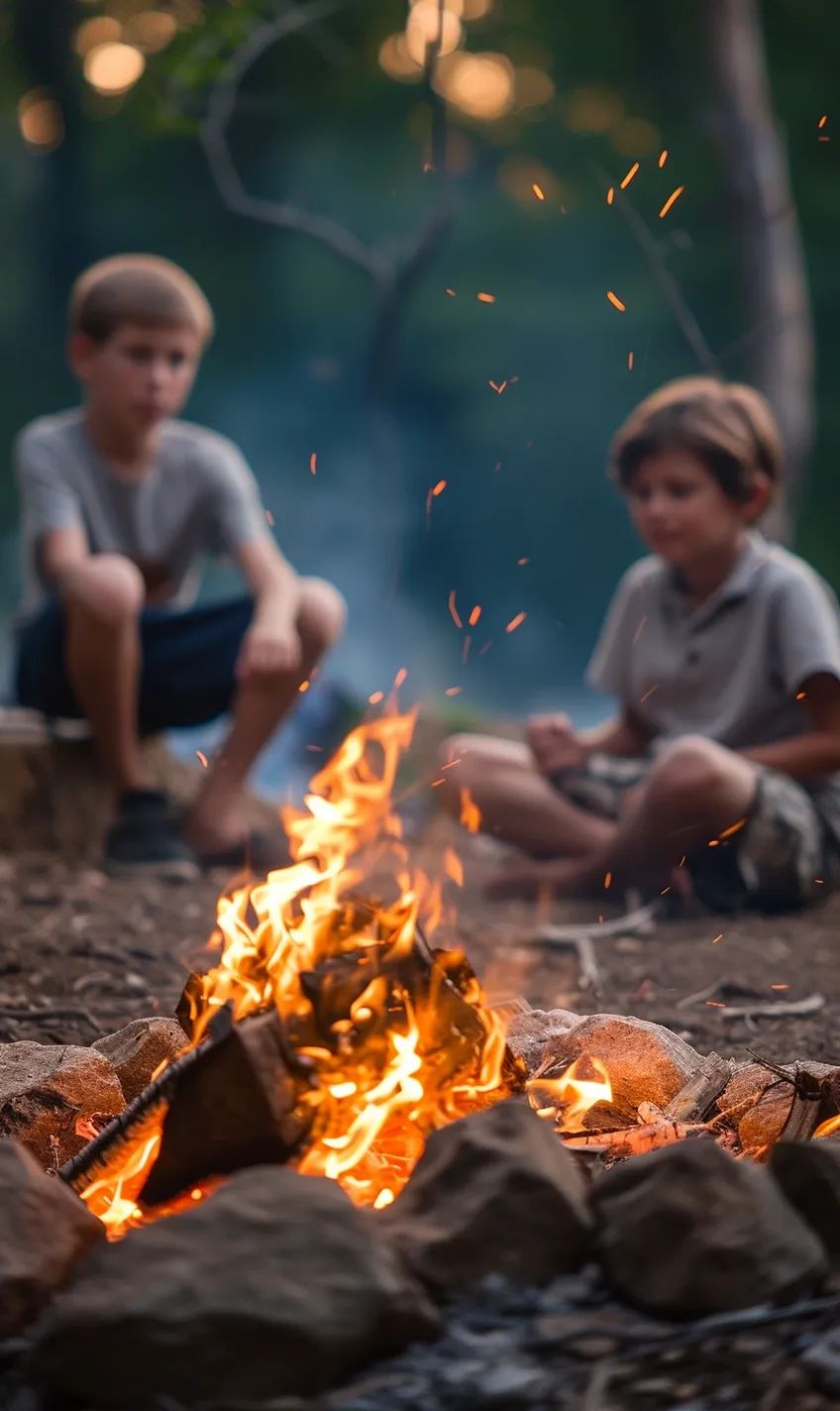
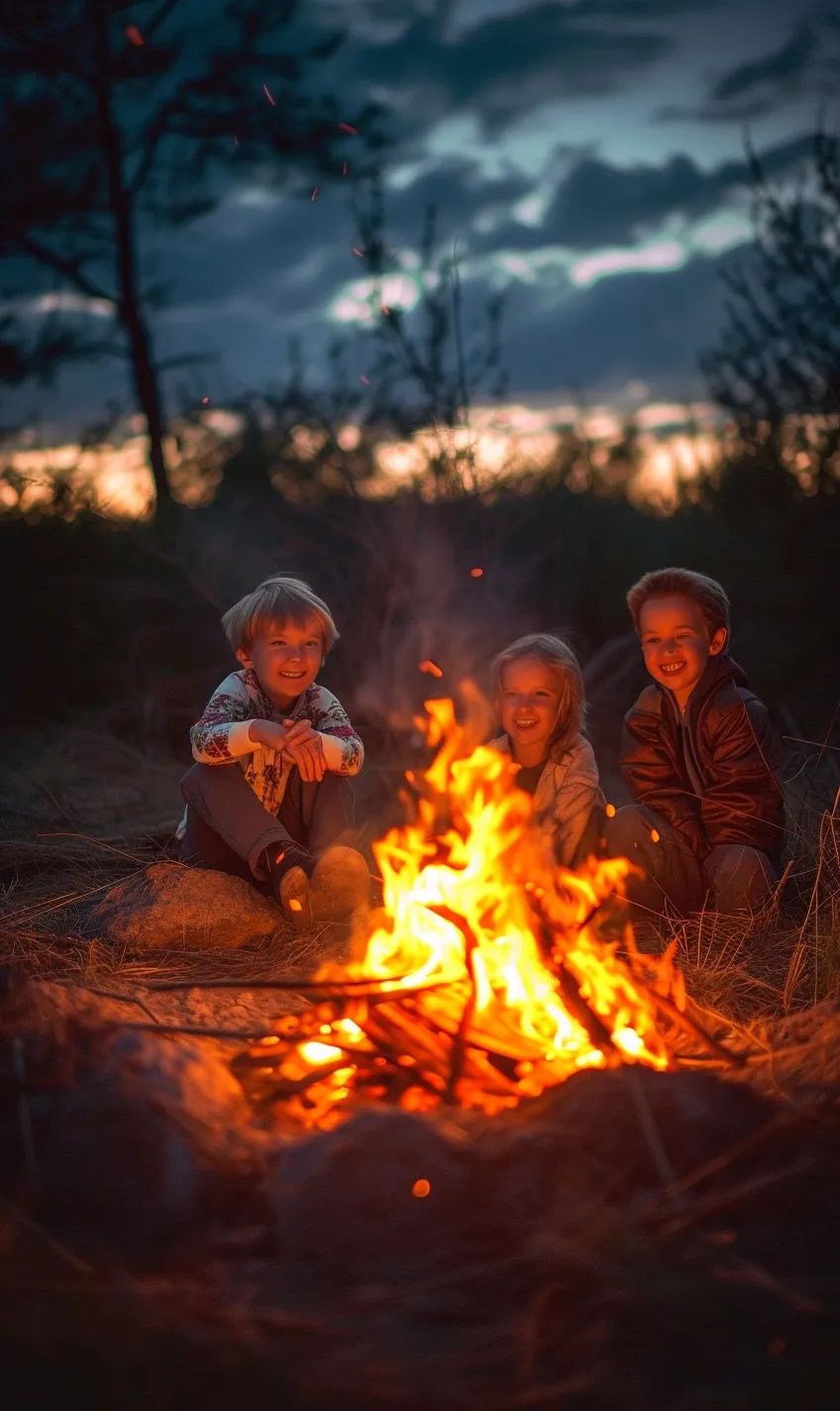
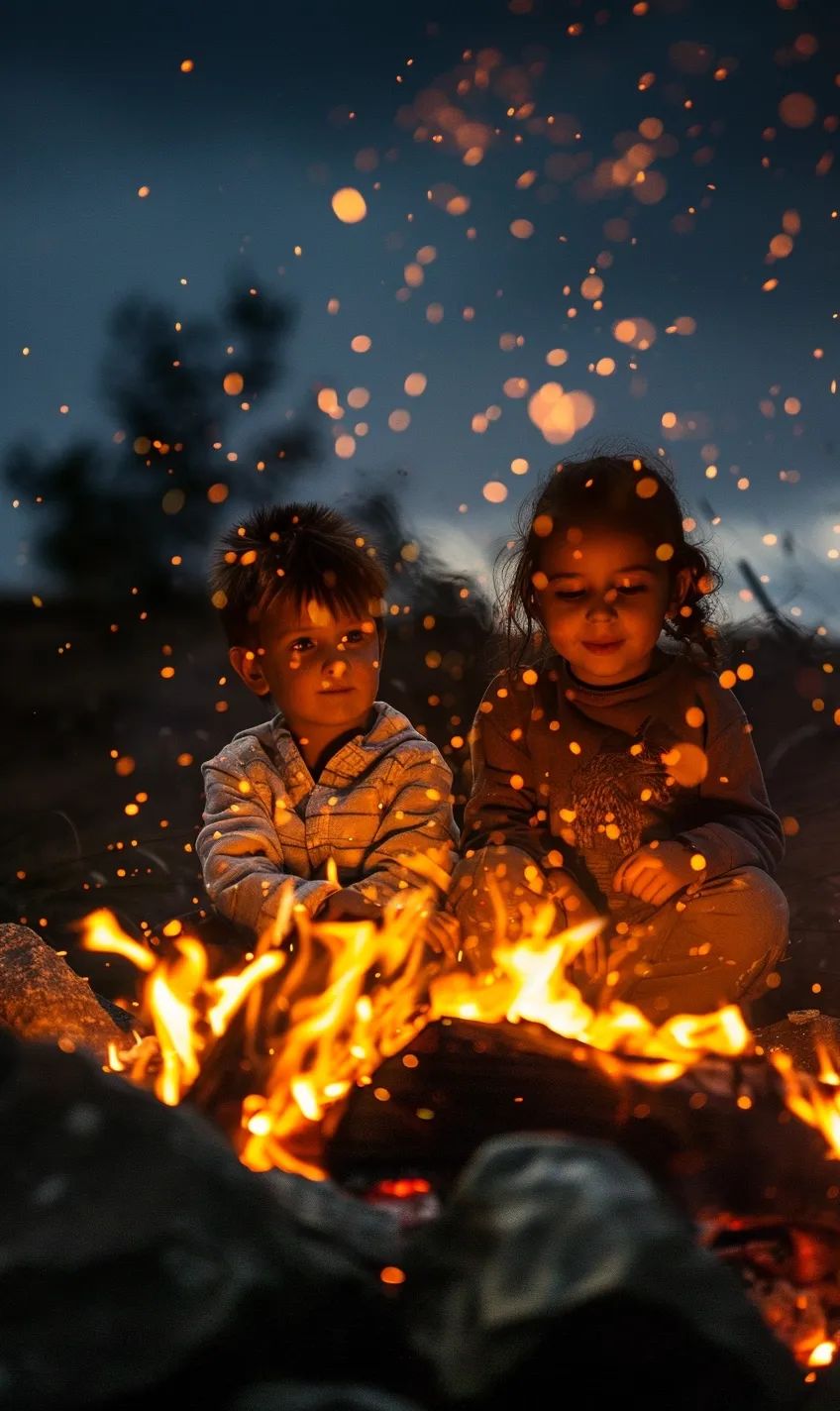
Frequently Asked Questions (FAQs)
Question 1: Are campfires safe for kids? Answer: Campfires can be safe for kids if proper precautions are taken and responsible adults supervise them.
Question 2: How can I keep my kids safe around the campfire? Answer: To keep your kids safe around the campfire, it is essential to establish clear rules, provide proper supervision, and teach them basic fire safety skills.
Question 3: What are some basic campfire safety rules for kids? Answer: Some basic campfire safety rules for kids include keeping a safe distance from the fire, never leaving them unattended near the fire, and teaching them not to play with matches or lighters.
Question 4: Can I let my child help start the campfire? Answer: Let young children help start the campfire is not recommended. It is better to involve them in other camping activities while adults handle the fire-starting process.
Question 5: What should I do if a child gets too close to the campfire? Answer: If a child gets too close to the campfire, calmly but firmly remind them of the safety rules and guide them back to a safe distance. It is essential to remain vigilant and offer constant supervision to prevent accidents.
Question 6: Are there any specific tips for camping with toddlers around campfires? Answer: When camping with toddlers around campfires, creating a physical barrier between them and the fire is crucial, so use a fire-resistant safety gate or rope. Additionally, always keep them within arm’s reach and teach them about fire safety from an early age.







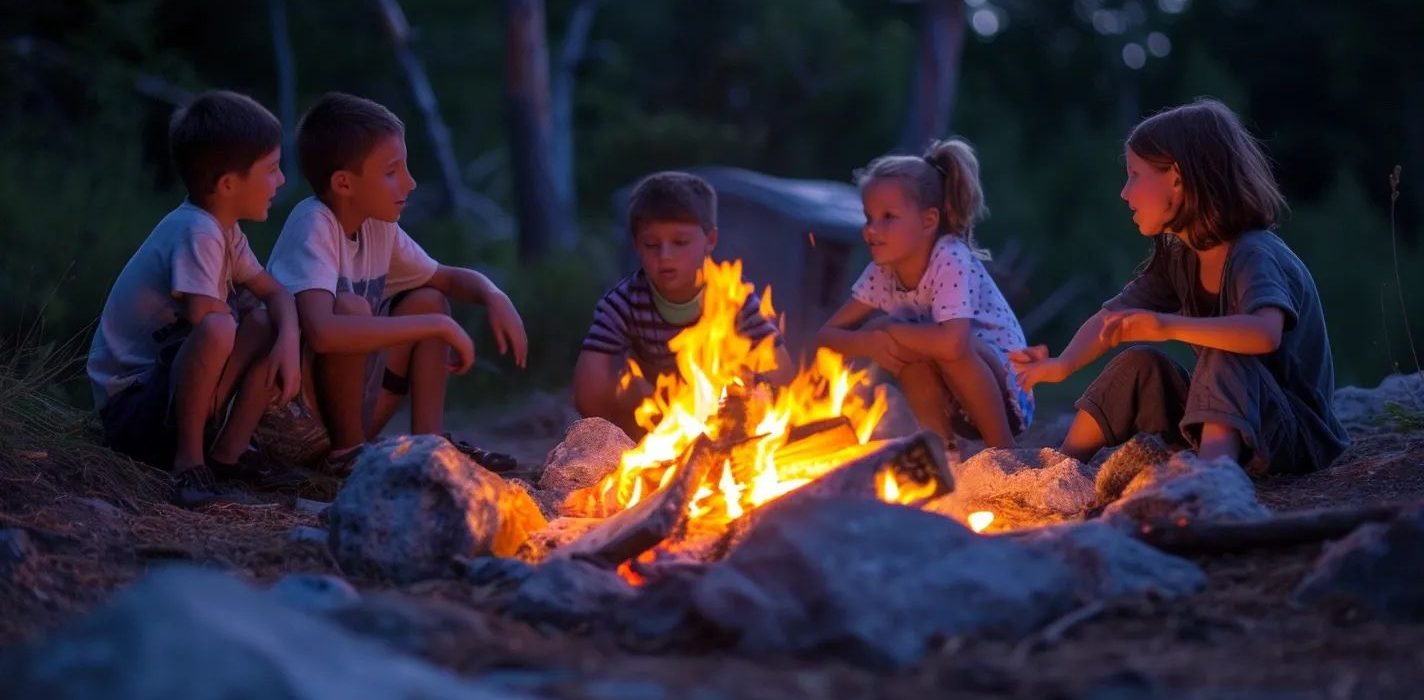
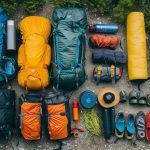

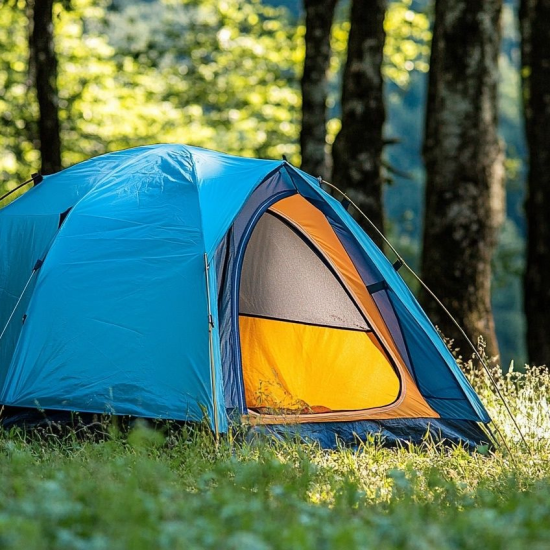
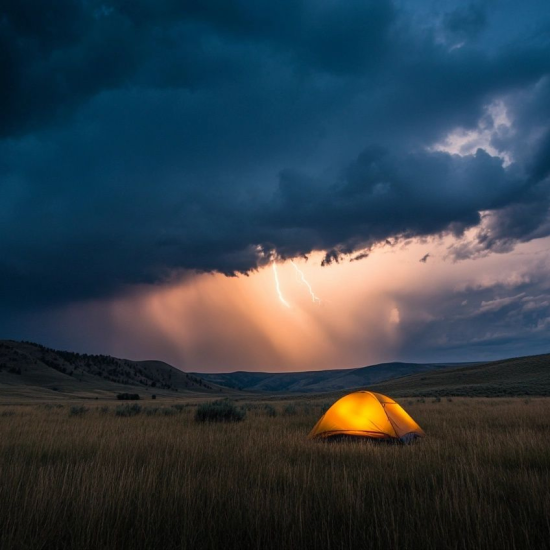
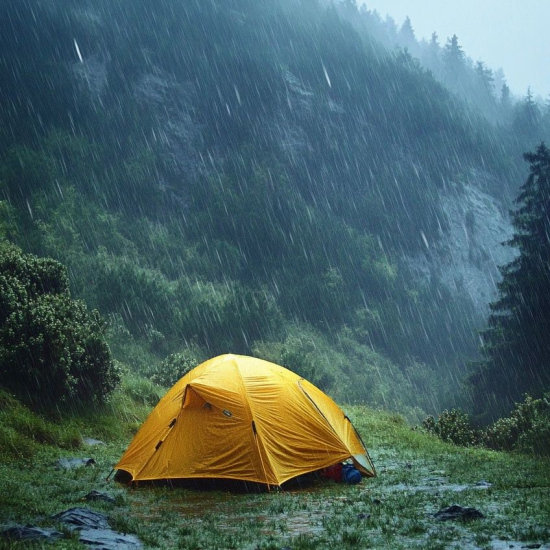
No Comment! Be the first one.